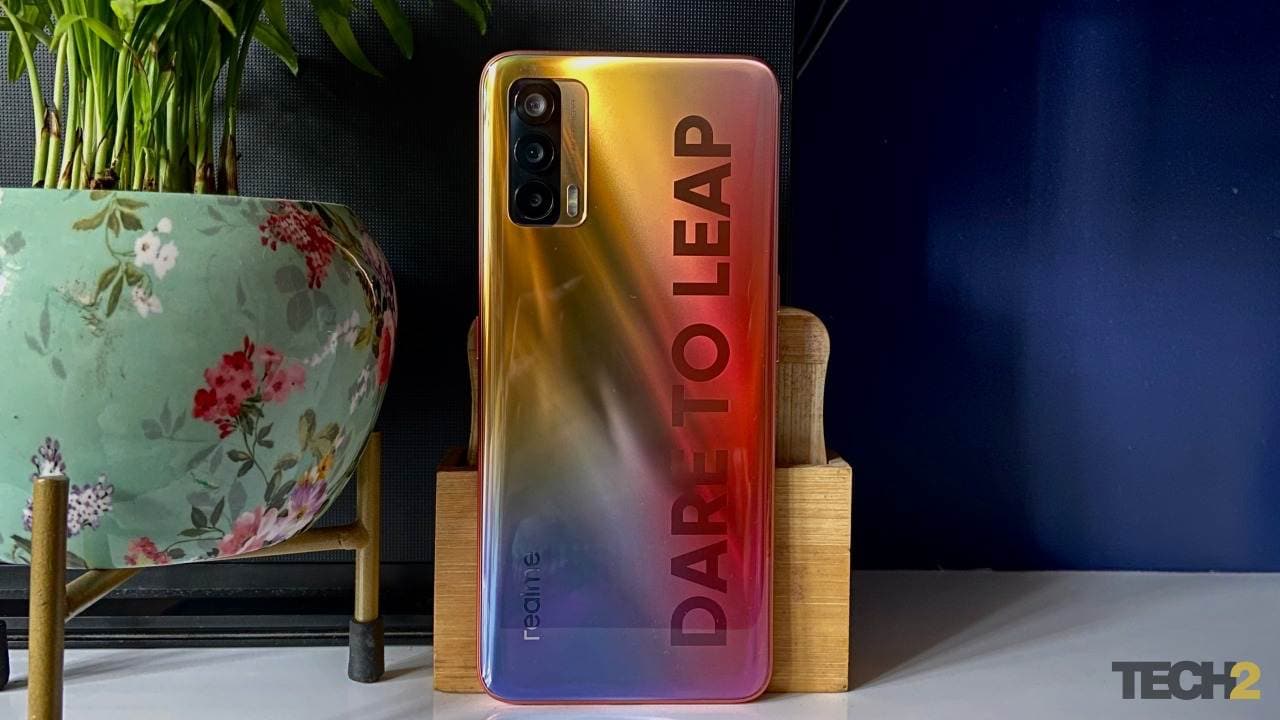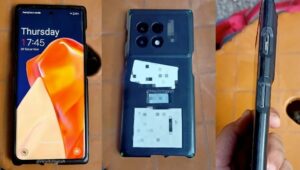A few months ago, back in 2020, it would have been quite easy for me to recommend Realme’s 7 Pro, as it was the best budget smartphone in the sub-Rs 20,000 segment. The only smartphone that offered better value was the mid-range, 5G-enabled OnePlus Nord, which gave buyers better hardware at a competitive base price of Rs 24,999.
However, by the end of 2020, a budget 5G smartphone showed up in the Indian market with Motorola launching its Moto G 5G at Rs 20,999. A few months later in 2021, we had the Mi 10i 5G and now, we have Realme’s budget 5G offering in the form of the competitively priced X7.
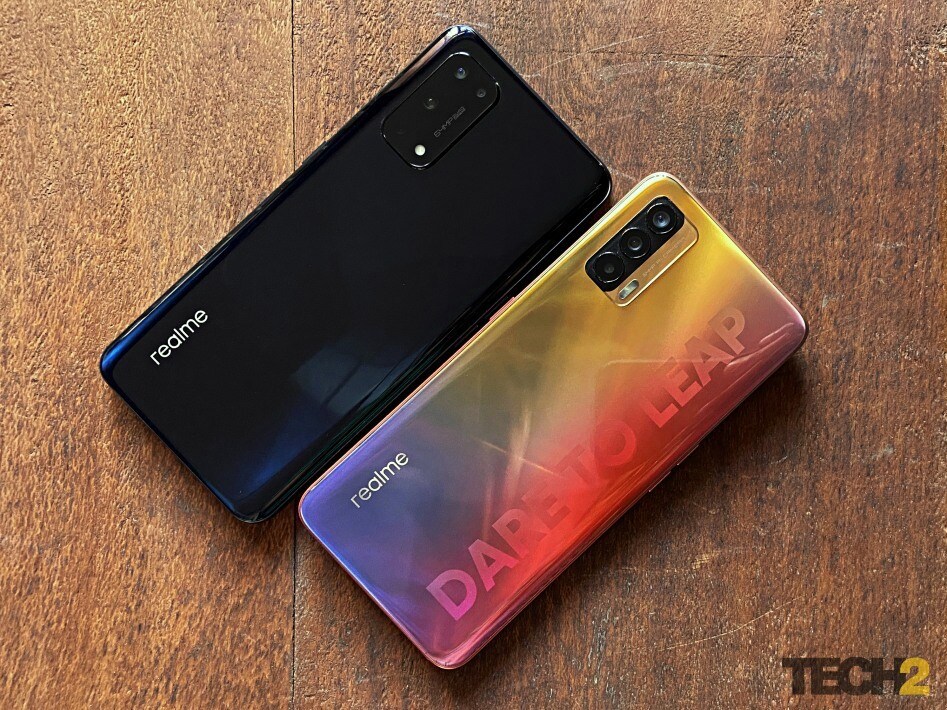
Realme X7 5G. Image: Tech2/Sheldon Pinto
Given that 5G availability is nowhere in sight, the Moto G 5G’s saving grace was its clean and stock-looking Android software. So, even if you weren’t bothered about 5G (you shouldn’t be), you still had more than one reason (software, battery life, performance) to go for the Moto G, despite its average cameras. With the Xiaomi Mi 10i, it’s all about the 108 MP camera or that 120 Hz display.
With the Realme X7, it is hard to find the added value it brings to the table apart from 5G. And that is where its problems begin.
Flashy design
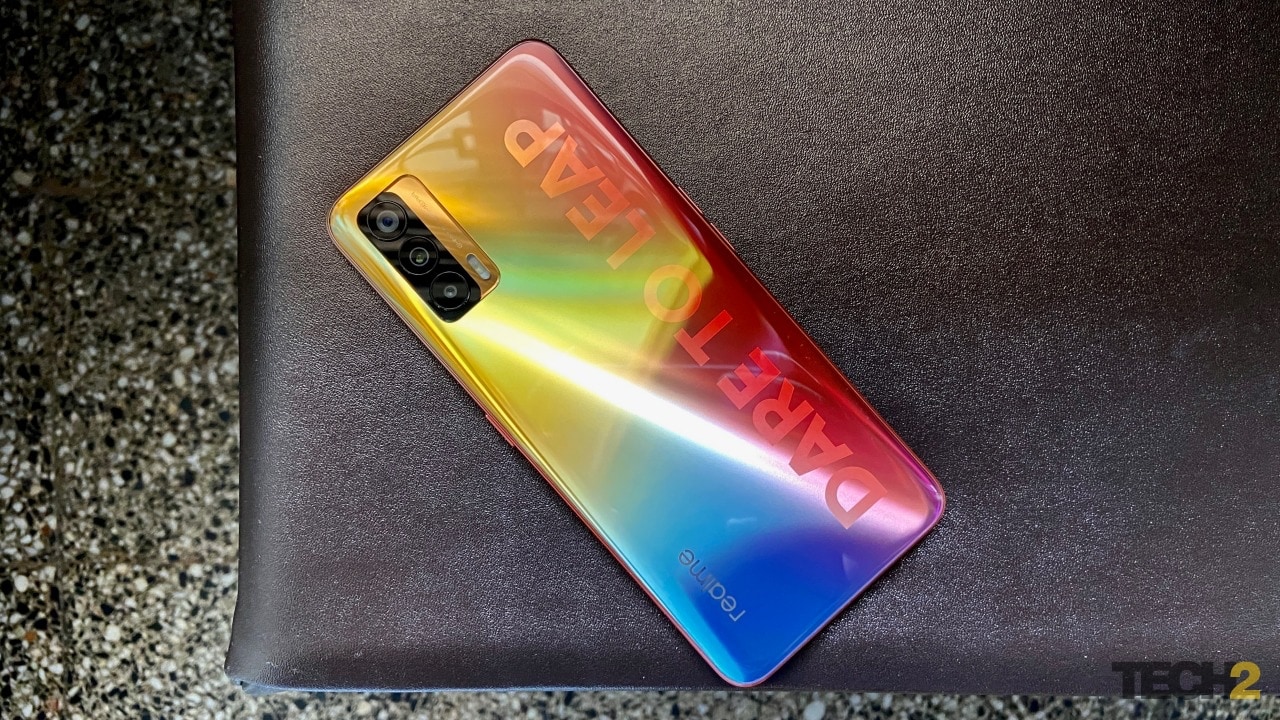
While I am not a fan of the bold ‘Dare to leap’ branding, I am a fan of that reflective back design in the Nebula colour. Image: Tech2/Sheldon Pinto
Just like the X7 Pro, the Realme X7, too, comes with an optional finish that is devoid of the rather bold ‘Dare to leap’ branding at the back. Sadly, that regular Space Silver finish is not as exciting as the Nebula finish. So those looking for something ‘cool’ minus the bold branding won’t have anything interesting to choose from.
While I am not a fan of the bold ‘Dare to leap’ branding, I am a fan of that reflective back design in the Nebula colour. It is a mix of yellow, red and blue, complete with a gradient orange frame. When viewed at an angle, the dazzling finish also displays another layer of green and purple, which enhances its overall appeal. Aimed at the youth, the Nebula finish will surely grab attention as it is quite unique.
Fit and finish levels are top-notch. It is hard to believe the X7 is a budget smartphone, as it’s hard to tell that the frame and the curved back are made of plastic, and not glass and metal. It is only the screen that is made of Gorilla Glass 5.
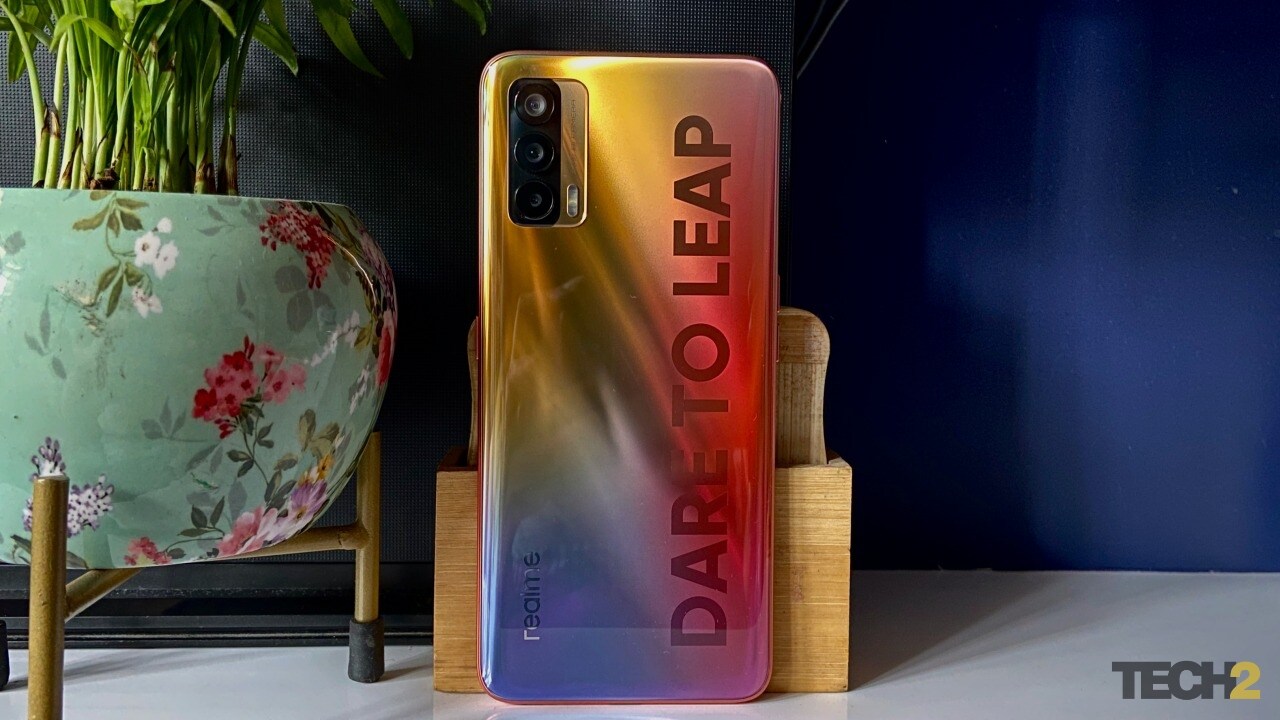
While the single, bottom-firing speaker is quite loud, it can get irritating at high volume levels and is surely not as immersive as a dual-speaker setup. Image: Tech2/Sheldon Pinto
Great build quality aside, there are a few things missing vis-à-vis competition. This includes the port for the 3.5 mm headphone jack and a second speaker up top, which means you do not have a stereo sound effect when playing games or watching movies. While the single, bottom-firing speaker is quite loud, it can get irritating at high volume levels and is surely not as immersive as a dual-speaker setup. Those who still prefer plugging in a wired headset will be happy to know that Realme provides a Type-C to 3.5 mm adapter in the box.
60 Hz OLED goodness
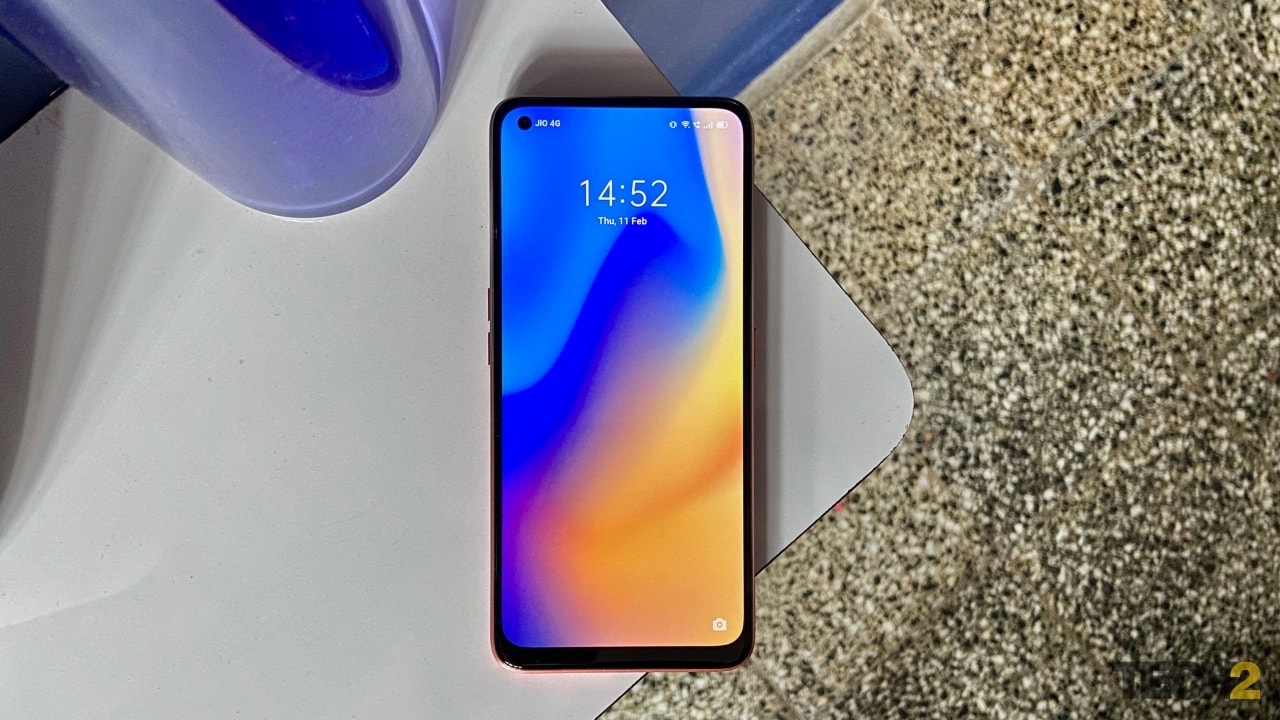
Thanks to Realme’s UI software, the display felt quick and responsive when it came to daily tasks. Image: Tech2/Sheldon Pinto
With a setup like the Realme 7 Pro’s, the Realme X7 has a regular 60 Hz FHD+ OLED display with a hole-punch cutout for the 16 MP camera. Thanks to Realme’s UI software, the display felt quick and responsive when it came to daily tasks. The software plays an important part here, and thanks to its fluidity, I did not miss a high-refresh rate 90 Hz panel.
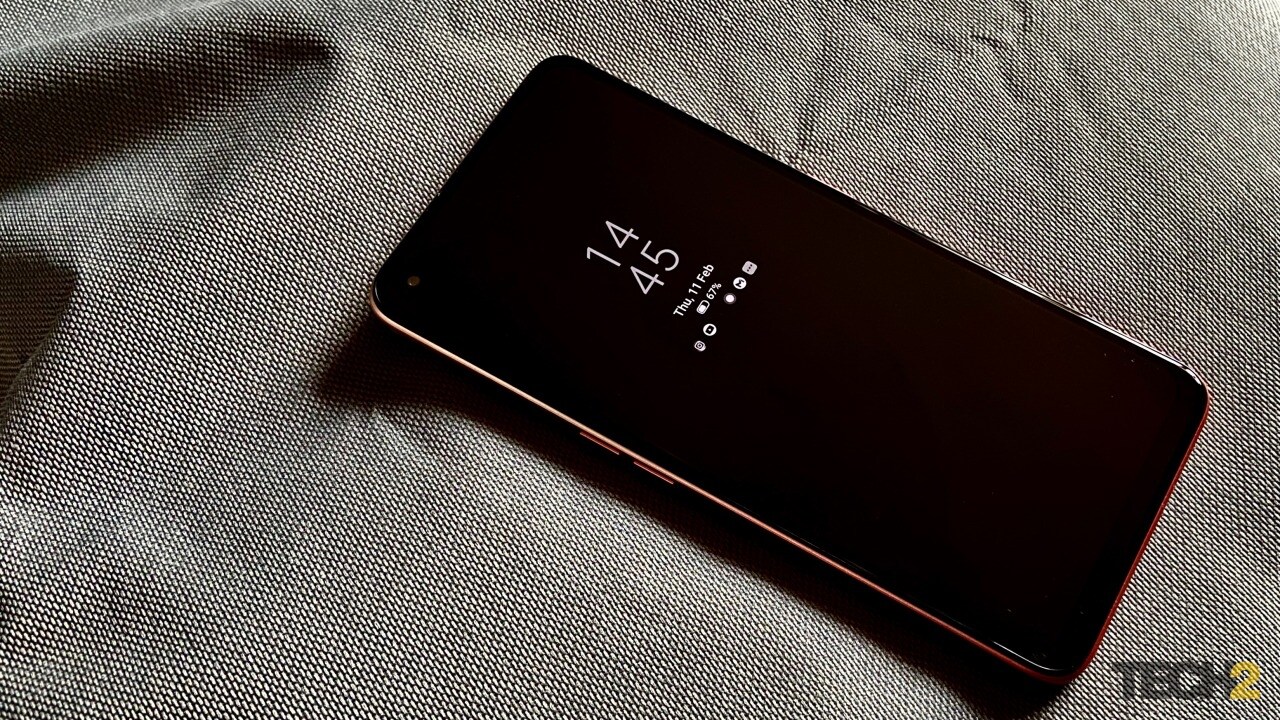
Because it’s an OLED panel, viewing angles are great and you also get some goodies like AOD for notifications along with an in-display fingerprint reader. Image: Tech2/Sheldon Pinto
The display is bright enough to tackle the bright afternoon sunlight and showcases colours that may seem a bit saturated to some. Because it’s an OLED panel, viewing angles are great and you also get some goodies like AOD for notifications along with an in-display fingerprint reader. Streaming movies with Widevine L1 (FHD) support was a fun experience thanks to the deep blacks, it’s just that you will need to plug in a pair of headphones for better sound.
With a 180 Hz touch sampling rate, sensitivity was also on par and I had no problems while swiping across the display when using apps or playing games.
Software is as good as it gets
As mentioned earlier, Realme X7 runs Android 10 with the Realme UI custom skin. In day-to-day use, it felt quite light and fluid, responding to taps and gestures without any lag. The software layer may not be as customisable as Oppo’s ColorOS 11, but it will get there with an upcoming update to Realme UI V2.0 that brings several changes.
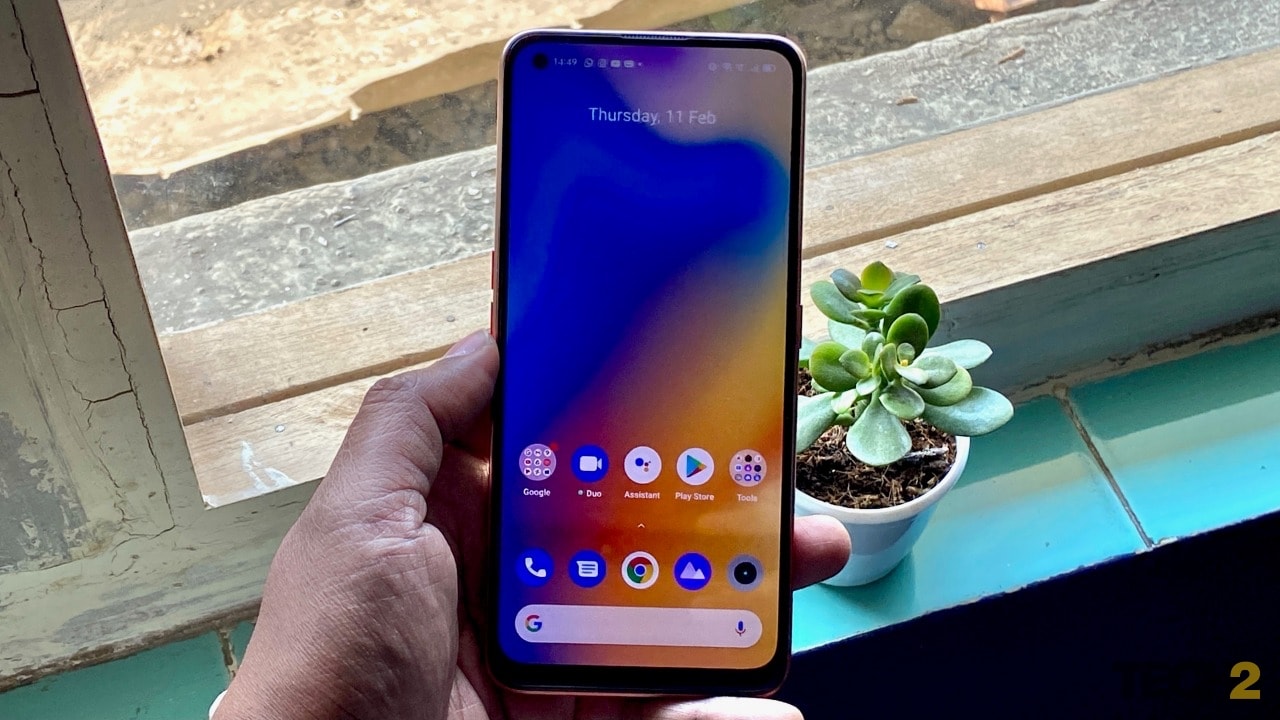
In day-to-day use, it felt quite light and fluid, responding to taps and gestures without any lag. Image: Tech2/Sheldon Pinto
For now, it looks more stock than custom, but I only wished that Realme used a better haptic motor to keep up with the software refinements. The one that comes with it feels very entry-level and vibrates a bit too much even for the smallest of interactions, like when typing on the keyboard.
Great performer but not optimised for gaming
The MediaTek 800U chipset was the highlight of Realme’s X7 series launch because it’s the first smartphone in India to get one. While it’s more of a mid-range chipset that should ideally compete with the likes of the Qualcomm Snapdragon 765G, it does fall a bit short.
But that’s not my problem with the chipset.
As mentioned in the software section of this review, the chipset performs really well and keeps things running smooth and lag-free in day-to-day use. But fire up a game and you will be a bit surprised when you peek into the settings.
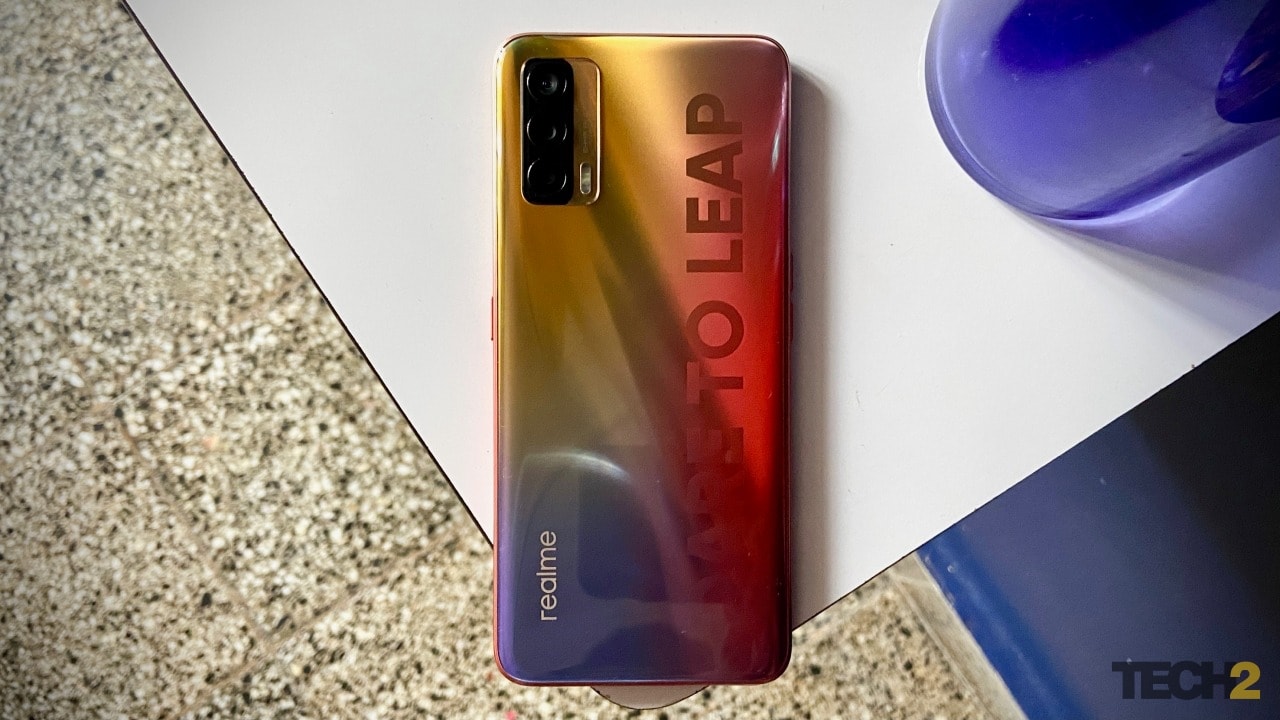
Despite its excellent heat management (liquid cooling), this is not exactly a smartphone that’s meant for gaming. Image: Tech2/Sheldon Pinto
Call of Duty: Mobile ran smoothly with a bit of stuttering, but maxed out at Medium graphics and High frame rate because it simply did not have any more graphic settings to try out. Given that this is a chipset meant for mid-range devices, it should have been capable of running the game at High and Very High at the least. The culprit here seems to be the lack of optimisation and given that the chipset is fairly new, it will be a while till developers wholeheartedly support the 800U.
Asphalt 9 Legends chugged along just fine with a couple of dropped frames and a few hiccups at High Quality graphics settings. The game ran the smoothest at Default (or Medium) settings. Older titles like Real Racing 3 also ran quite smoothly without any hiccups but at a noticeably lower resolution.
Despite its excellent heat management (liquid cooling), this is not exactly a smartphone that’s meant for gaming. At least until developers begin to support the new chipset.
An average camera… for a budget smartphone
Big, does not always mean better. The same philosophy applies to camera sensors as the image quality often relies (heavily) on the camera software and imaging algorithms apart from the ISP (onboard the chipset). With the Realme X7, we get a 64 MP sensor that may seem similar to the one on the Realme 7 Pro, but the results are quite different.
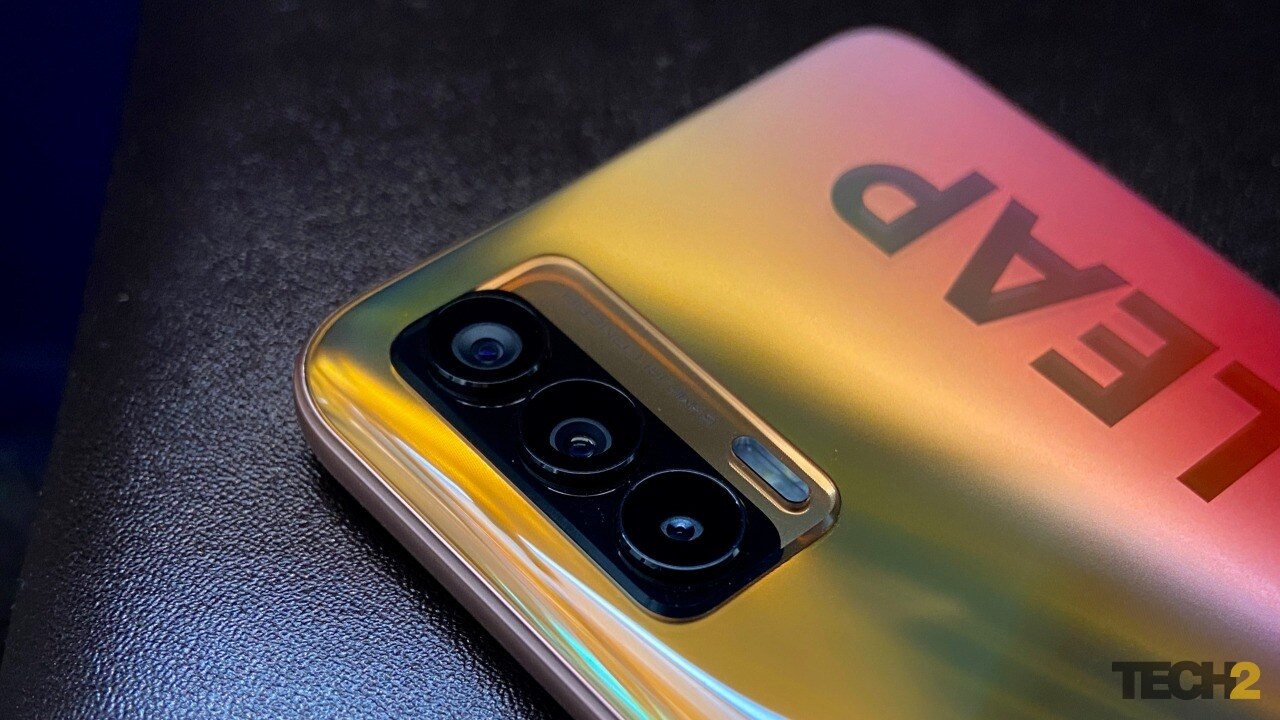
With the Realme X7, we get a 64 MP sensor that may seem similar to the one on the Realme 7 Pro. Image: Tech2/Sheldon Pinto
The primary camera shoots clean images in daylight with enough detail especially when shooting steady subjects or objects. The noise suppression seems a bit too aggressive, but with the colours bumped up in terms of saturation, they appear fine as long as you don’t pixel-peep. The dynamic range too seems fine, so you will not end up with crushed blacks in the shadows.
After sunset, the details take a noticeable hit. Those aggressive noise suppression algorithms I noticed while clicking photos in daylight, result in textures that end up looking more like paintings in low light. Naturally, I assumed that the Night mode would fix things. And it did… in a way.

The Night mode shoots some clean and clear images, just that it lacks texture and grain. So the images may appear fine, but zoom in a bit and you will wonder where the details disappeared. For what it’s worth, the night photos still look good, but a bit dreamy. However, they are horribly low on detail especially in comparison to the Real 7 Pro (same price tag, Snapdragon chipset), that was jaw-droppingly impressive at the same task.
The 8 MP ultra-wide-angle lens is bearable with plenty of lens barrel distortion, it’s good for capturing a different perspective and I’m glad that Realme lets you use the Night mode on it as well. The Macro camera goes a bit too excessive with the processing and gets you some unrealistic photos. Some may like it, but I didn’t dig it. Instead, I preferred the cropped output from the 64 MP sensor.
Supporting up to 4K 30 fps video recording, I was impressed by the stabilisation that the camera offers. Shooting at anything below 4K 30 fps saw the apparent lack of sharpness even though 1080p 60 fps video showcased a smooth and steady bitrate. I got the best detail when shooting at 4K @30 fps, but the colours were a bit too saturated. Some may like the punchy tones that appears like it’s running an Instagram filter, but I wasn’t a fan of it as it appeared a bit too excessive even on a colour-accurate display.

In short, if I had to pick the best camera between the Realme X7, the Realme 7 Pro, the Moto G 5G, and the Xiaomi Mi 10i, I’d still pick the 7 Pro despite losing out on 5G. Image: Tech2/Sheldon Pinto
The 16 MP selfie camera may seem like a downgrade from the capable 32 MP camera on the 7 Pro, but it held up quite well in all kinds of lighting conditions shooting abnormally sharp selfies in portrait mode.
In short, if I had to pick the best camera between the Realme X7, the Realme 7 Pro, the Moto G 5G, and the Xiaomi Mi 10i, I’d still pick the 7 Pro despite losing out on 5G.
A one-day phone
With a 4,310 mAh battery inside and a 7 nm chipset onboard, I did not expect any trouble with battery life and that was pretty-much the case with X7. The phone easily got me through a day of regular use and given that it can’t run games at high settings, there are even more savings despite my gaming-heavy usage. The lovely OLED display also plays a part here and the AOD feature did not suck too much power either.
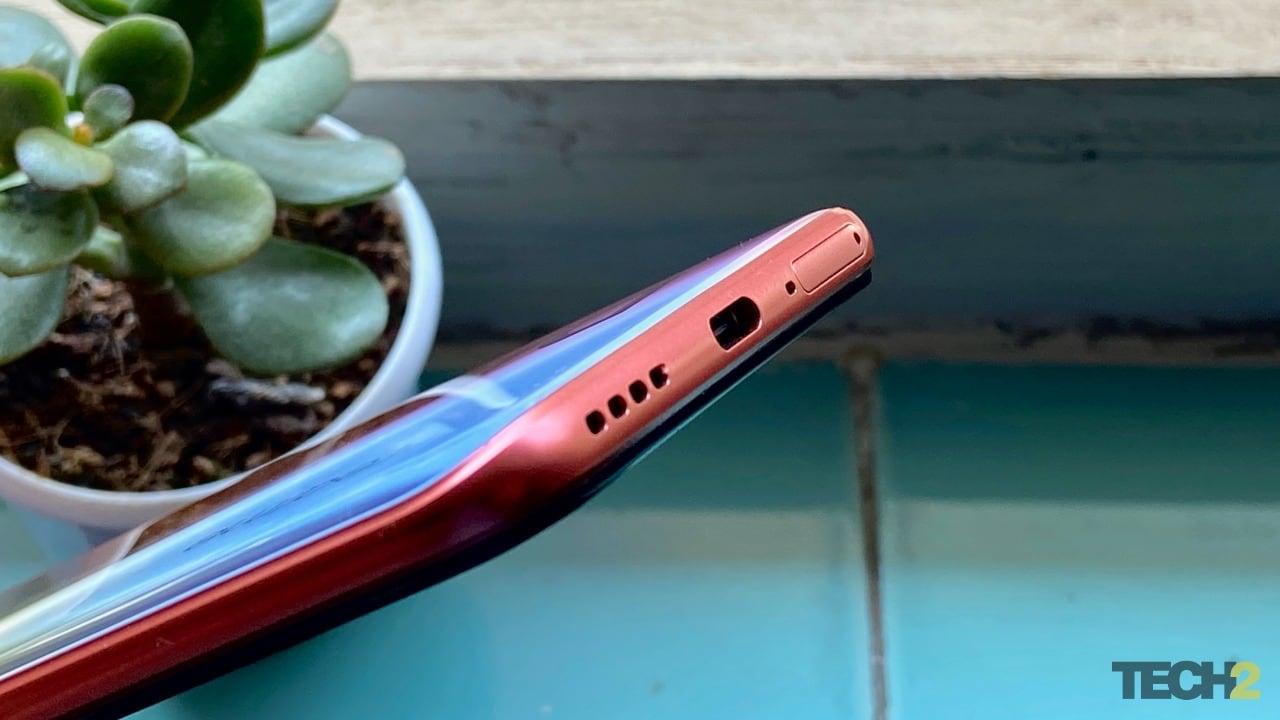
It will juice up the phone from 0-100 percent in about 50 minutes, which is good keeping in mind what the competition (Xiaomi and Motorola) have on offer. Image: Tech2/Sheldon Pinto
The charging bit like with every Realme phone is the impressive part. The phone supports 50 W SuperDart charging but comes with the same 65 W charger that’s available with the X7 Pro. Regardless, the slightly throttled 50 W charging experience was not bad at all. It will juice up the phone from 0-100 percent in about 50 minutes, which is good keeping in mind what the competition (Xiaomi and Motorola) have on offer.
Should you buy one?
Given that 5G is nowhere in sight at the moment and that most budget smartphones usually don’t go through milestone Android updates too well, you will end up upgrading to a 5G device when 5G does arrive (possibly in a year or two) and is usable in India.
If you are looking for a budget smartphone with 5G, then there is really no reason to buy the Realme X7, unless you cannot do with an OLED display.
If 5G, gaming performance and a solid battery life is a priority for your next budget smartphone purchase, then I would strongly recommend the Moto G 5G over the Realme X7.
The camera may not be perfect (neither is the X7’s camera) and the phone is a bit chunky (thanks to that 5,000 mAh battery), but it’s got a killer two-day battery life, with a powerful Snapdragon 750G chipset and the latest software with a near stock version of Android 11. And if you care about it, the G also has a 3.5 mm headphone jack.

If you are looking for a budget smartphone with 5G, then there is really no reason to buy the Realme X7, unless you cannot do with an OLED display. Image: Tech2/Sheldon Pinto
And since we are talking ‘budget 5G’, I must mention the Xiaomi Mi 10i, even though Nimish wasn’t impressed with that 108 MP camera’s low light performance in his review.
As you can tell, there’s always some kind of compromise involved with the above mentioned 5G smartphones. And this is why I would recommend spending a bit more (around Rs 5000) and go in for a OnePlus Nord. Priced from Rs 24,999 onwards it got great specs and seems to be an all-rounder going by Ameya’s review.
Find latest and upcoming tech gadgets online on Tech2 Gadgets. Get technology news, gadgets reviews & ratings. Popular gadgets including laptop, tablet and mobile specifications, features, prices, comparison.

